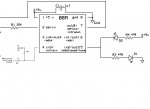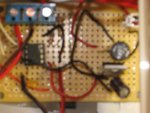krogerssolar
Senior Member
Hi guys I'm new to the Picaxe and to the Forum. I have a few question i ordered some 08M Picaxe for a G Scale Train project to make flashing Ditch Lights on three locomotives. the programing went well got the flash down with the help of http://www.trainelectronics.com/artcles/ditch_lights/index.htm Dave Bodnar http://www.trainelectronics.com/ART5700TrainEngineerRevolution/AUX-2-PICAXE/index.htm the issue im having which im not really sure out to trouble shoot is when i hook up to my battery pack of 20V connect up my 20v to 5v regulator and then connect that to the picaxe it powers up fine when i connect my locomotive up and connect the trigger wires to it just starts flashing and i can not stop it until disconnecting one or the other from the battery. it seem to work ok on my current project working off of 4 AAA batteries my other unit not so well what i cant figure out is where im getting signals or Resistance from on my other unit i see issues from the sound card. On this one there is no sound yet i added a 470ohm resistor on my incoming + line to my 5v ps and that stopped it from going into flashing but it got hot not good anybody have any clue for me I'm not a good electronics geek but i will try and provided as much info as i can
Attachments
-
23.8 KB Views: 57
-
39.5 KB Views: 59
Last edited:




